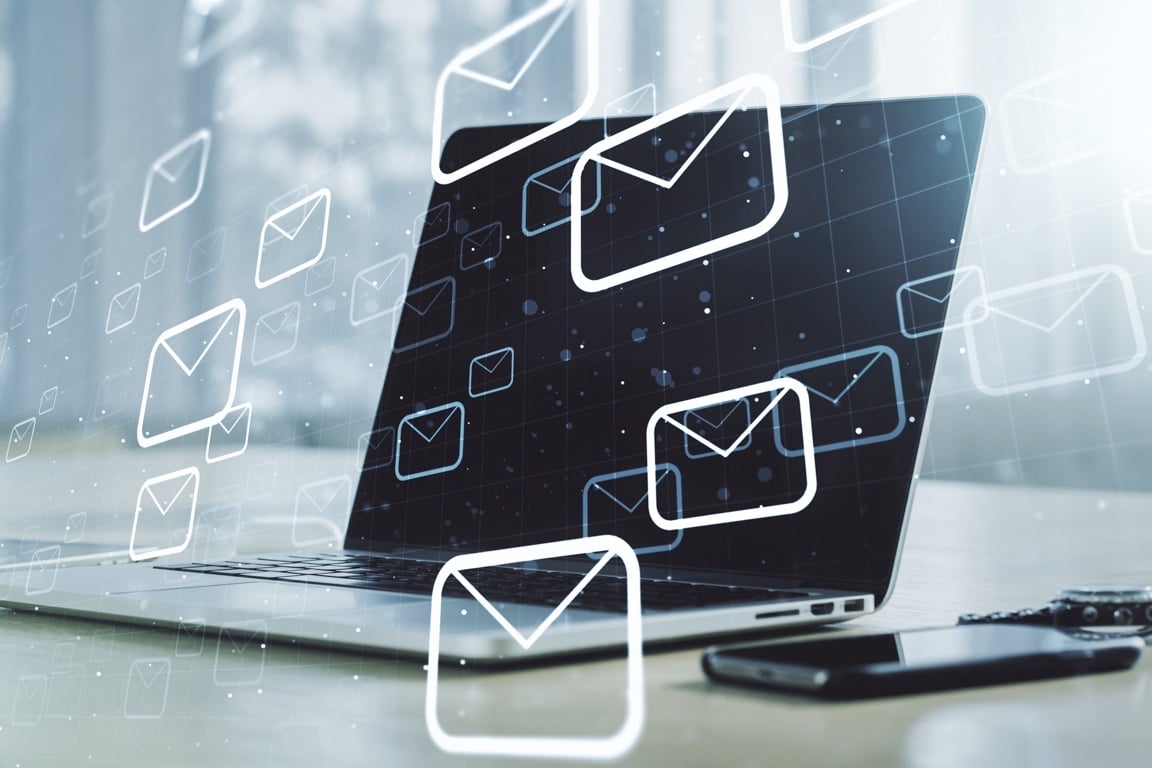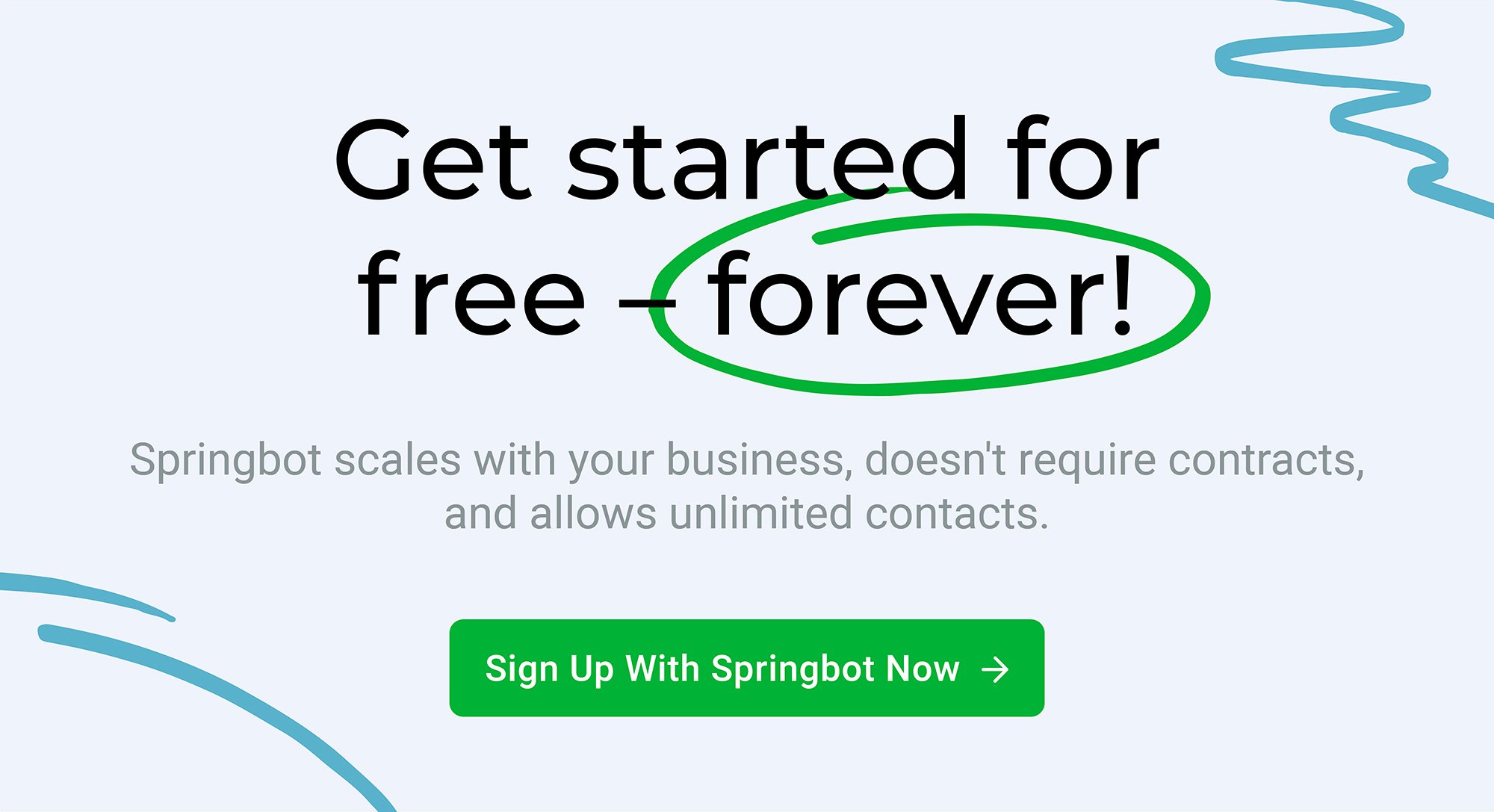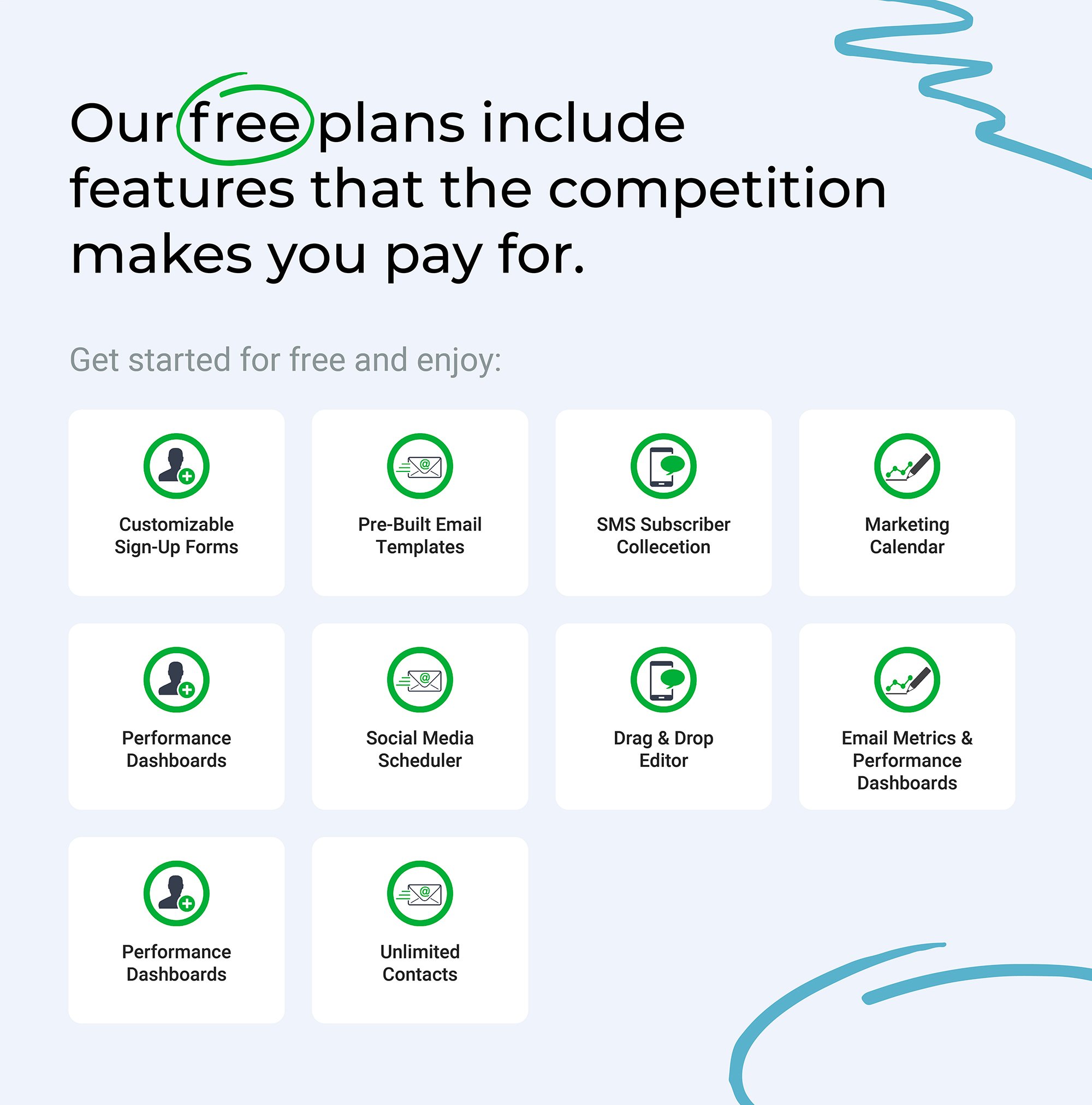Table of Contents
- What is Email Marketing?
- Getting Started with Email Marketing Tools
- Email Marketing Tips for Beginners
- Email Marketing Best Practices
- Get Up & Running Fast With Springbot - For Free
Email marketing has proven a powerful tool for businesses to engage with their audience, drive conversions, and build long-term relationships. Whether you're a small business owner, a blogger, or an entrepreneur, understanding the fundamentals of email marketing is essential for your success.
In this guide, we will walk you through the basics of email marketing, provide useful tips, and equip you with the knowledge to start your email marketing journey.
What is Email Marketing?
Email marketing is the process of sending targeted messages to a group of people via email. It allows businesses to communicate directly with their customers, deliver personalized content, and drive desired outcomes.
Getting Started with Email Marketing Tools
By cultivating a quality email list and carefully choosing an appropriate email service provider, you can unlock the potential to connect with your audience on a deeper level and achieve your marketing objectives.
Building an Email List
You need a quality email list to embark on your email marketing journey. To help grow your list of subscribers, follow these best practices.
- Define Your Target Audience: Identify the target audience for your email marketing campaigns. Understand their demographics, interests, and needs to ensure that your email content is relevant and valuable to them.
- Offer Valuable Content: Provide valuable content that resonates with your target audience. This could be blog posts, e-books, guides, webinars, or exclusive offers. Create compelling content that visitors would be willing to exchange their email addresses for.
- Optimize Your Website for Lead Generation: Implement opt-in forms strategically on your website to capture email addresses. Place them in prominent locations like the header, sidebar, or within the content. Consider using pop-ups or slide-ins with compelling calls to action to capture attention.
- Create Irresistible Lead Magnets: Offer lead magnets, also known as content upgrades, to incentivize visitors to subscribe to your email list. These can be free e-books, cheat sheets, templates, or exclusive access to valuable resources. Ensure the lead magnet is directly related to the content they consume.
- Utilize Landing Pages: Design dedicated landing pages with a clear value proposition for your lead magnets. These pages should focus solely on capturing email addresses and convincing visitors of the value they will receive by subscribing. Use persuasive copy, compelling visuals, and prominent opt-in forms.
- Leverage Social Media: Promote your lead magnets and email newsletter on your social media platforms. Drive traffic to your website and landing pages through engaging posts, sponsored ads, and collaborations with influencers or complementary brands.
- Implement Double Opt-in: Use a double opt-in process, where subscribers confirm their email address after initial sign-up. This ensures that you have a list of engaged and genuinely interested subscribers. It also helps maintain a clean and deliverable email list.
- Segment Your Email List: As your list grows, segment subscribers based on demographics, interests, or engagement levels. This allows you to send targeted and personalized content to different segments, increasing the relevancy and effectiveness of your campaigns.
- Provide Clear Privacy Policies: Assure subscribers that their information is secure and will not be shared with third parties. Clearly communicate your privacy policies and terms of service, building trust with your subscribers.
- Regularly Clean and Maintain Your List: Regularly clean your email list to remove inactive or bouncing email addresses. Use email verification tools to ensure the validity of addresses and maintain a high deliverability rate.
- Comply with Data Protection Regulations: Familiarize yourself with data protection regulations such as the General Data Protection Regulation (GDPR) or the CAN-SPAM Act. Ensure that your email marketing practices comply with these regulations, protecting both your subscribers' data and your brand's reputation.
Choosing an Email Marketing Service Provider
Selecting the right email marketing service provider is crucial. Factors include ease of use, pricing, automation capabilities, and customer support.
Popular platforms for beginners include Mailchimp, ConvertKit, and Constant Contact, but those platforms often come with high price points for entry, and can quickly overwhelm new users.
Springbot, on the other hand, was designed especially for email marketing beginners and offers a free subscription so you can get started fast.
From email templates to pre-configured automation, learn more about Springbot's features and why it’s the ideal email marketing platform for beginners.
12 Critical Email Marketing Tips for Beginners

Effective email campaigns require careful planning, attention to detail, and a deep understanding of your audience.
This section will explore essential tips and email marketing strategies to help you craft compelling and engaging campaigns that captivate your subscribers and drive desired actions.
Get ready to unleash the power of email marketing and take your campaigns to the next level!
1.) Build Permission-Based Email Lists
Only email individuals who have explicitly permitted you to contact them. Implement opt-in forms on your website and clearly communicate how subscribers will benefit from joining your email list.
Use a Reliable Email Service Provider Like Springbot
2.) Use a Reliable Email Service Provider Like Springbot
Choose a reputable ESP with essential features like list management, automation, tracking, and analytics. Popular ESPs for beginners include Springbot, Mailchimp, ConvertKit, and Constant Contact.
3.) Craft Compelling Subject Lines
Grab the attention of your subscribers with concise and compelling subject lines. Use action-oriented language, personalization, and curiosity to entice recipients to open your emails.
4.) Personalize Email Content
Tailor your emails to individual subscribers by using personalization tokens to include their name or other relevant details. Leverage segmentation to send targeted content based on subscribers' interests, preferences, or purchase history.
5.) Mobile-Optimize Your Emails
Optimize your email design and layout to ensure a seamless experience across different devices, especially mobile. Use responsive templates, clear fonts, and optimized images to enhance readability and user experience on smaller screens.
6.) Keep Emails Clear and Concise
Write concise and scannable email content. Use short paragraphs, bullet points, and subheadings to improve readability. Keep the focus on one main message or call-to-action per email to avoid overwhelming subscribers.
7.) Include a Clear Call-to-Action (CTA)
Clearly state the desired action you want subscribers to take in your emails. Use attention-grabbing buttons or links that stand out visually. Make it easy for recipients to understand what they should do next.
8.) Test and Optimize
Continuously test different elements of your emails, such as subject lines, content, CTAs, or send times. Conduct A/B tests and analyze the results to understand what resonates best with your audience. Use data to optimize your future email campaigns.
9.) Monitor Email Metrics
Pay attention to key email metrics like open rates, click-through rates, conversion rates, and unsubscribe rates. These metrics provide insights into the performance and engagement of your email campaigns, allowing you to make data-driven decisions.
10.) Provide Value and Relevance
Focus on delivering valuable content to your subscribers. Share educational information, exclusive offers, industry insights, or entertaining content that aligns with their interests and needs. Aim to build trust and foster long-term relationships.
11.) Maintain a Consistent Sending Schedule
Develop a consistent email-sending schedule that works for your audience and business. Whether weekly, biweekly, or monthly, maintain regular communication to stay top of mind without overwhelming subscribers.
12.) Comply with Email Regulations
Familiarize yourself with email regulations such as the CAN-SPAM Act (for the United States) or the GDPR (for European Union countries). Ensure that your email marketing practices comply with these regulations to protect your subscribers' privacy and maintain your brand's reputation.
Best Practices for Email Marketing Beginners

By implementing these best practices, you can set a solid foundation for your email marketing journey and maximize the impact of your campaigns. Let's dive into the key strategies and techniques that will help you make the most out of your email marketing efforts as a beginner.
Avoiding Spam Filters & Legal Compliance
When sending emails, adhering to spam filter guidelines and legal requirements is crucial to ensure your messages reach your subscribers' inboxes.
- Use Permission-Based Marketing: Only send emails to individuals who have explicitly opted in to receive communications from you. Implement double opt-in to verify and confirm their subscription, ensuring that you have engaged and interested subscribers.
- Provide Clear Unsubscribe Options: Make it easy for recipients to unsubscribe from your emails. Include an unsubscribe link in every email, and promptly honor opt-out requests to maintain a good sender reputation.
- Include Your Physical Address: Include your physical mailing address in your email footer. This is a legal requirement in many countries and helps establish trust with your subscribers.
- Familiarize Yourself with Regulations: Understand and comply with email marketing regulations such as the CAN-SPAM Act (for the United States) or the GDPR (for European Union countries). These regulations outline requirements regarding email content, consent, and privacy, ensuring your subscribers' information protection.
Setting Up Email Automation & Autoresponders
Automation allows you to streamline your email marketing efforts, save time, and deliver personalized messages at scale. Utilize automation and autoresponders to enhance your email campaigns.
- Welcome Series: Set up a series of automated welcome emails that greet and introduce new subscribers to your brand, products, or services. Use this opportunity to deliver value, establish a connection, and guide them toward further engagement.
- Abandoned Cart Recovery: Implement abandoned cart recovery emails if you have an e-commerce store. Send automated reminders to customers who added items to their cart but still need to complete the purchase. Offer incentives or personalized recommendations to encourage them to return and complete the transaction.
- Drip Campaigns: Drip campaigns are a series of automated emails sent over time to nurture leads or educate subscribers. Plan and create a sequence of valuable content that gradually guides your audience toward a specific goal or conversion.
- Birthday or Anniversary Emails: Personalize your email marketing by sending subscribers automated birthday or anniversary emails. Celebrate special occasions with exclusive offers, discounts, or personalized messages, strengthening your relationship with your audience.
Analyzing Email Metrics and Testing
Regularly monitor and analyze email metrics to gauge your campaigns' success and identify improvement areas.
- Open Rate: Track the percentage of recipients who open your emails. A low open rate may indicate subject lines, sender names, or email deliverability issues.
- Click-Through Rate (CTR): Measure the percentage of recipients clicking links within your emails. A higher CTR indicates engaged subscribers and effective calls to action.
- Conversion Rate: Monitor the rate at which subscribers take the desired action after clicking on a link in your email. This could include making a purchase, filling out a form, or signing up for an event. Analyze and optimize your email content and landing pages to improve conversions.
- A/B Testing: Conduct A/B tests to compare the performance of different email elements - test variables such as subject lines, sender names, email designs, CTAs, or sending times. Analyze the results to determine which elements resonate best with your audience and optimize future campaigns based on the findings.
Building Trust and Engaging Subscribers
Building trust and engagement with your subscribers is crucial for the long-term success of your email marketing efforts.
- Consistent Branding: Maintain consistent email branding to reinforce recognition and trust. Use consistent colors, fonts, and voice that aligns with your brand identity.
- Valuable Content: Deliver valuable and relevant content that addresses your subscribers' pain points, educates them, or entertains them. Share insights, tips, industry news, or exclusive offers that align with their interests and needs.
- Personalization: Use personalization tokens to address subscribers by their names or include other relevant details. Segment your email list and tailor content to specific segments based on demographics, preferences, or purchase history. Personalization enhances the relevance of your emails and fosters a stronger connection with your audience.
- Engagement Opportunities: Encourage interaction and engagement within your emails. Include social media buttons, surveys, polls, or user-generated content to spark conversations and gather feedback from your subscribers.
Get Up & Running Fast With Springbot Email Marketing
Ready to start implementing what you've learned? Sign up for a free Springbot account and embark on a successful email marketing journey that’s easier to use and more affordable than the competition.






